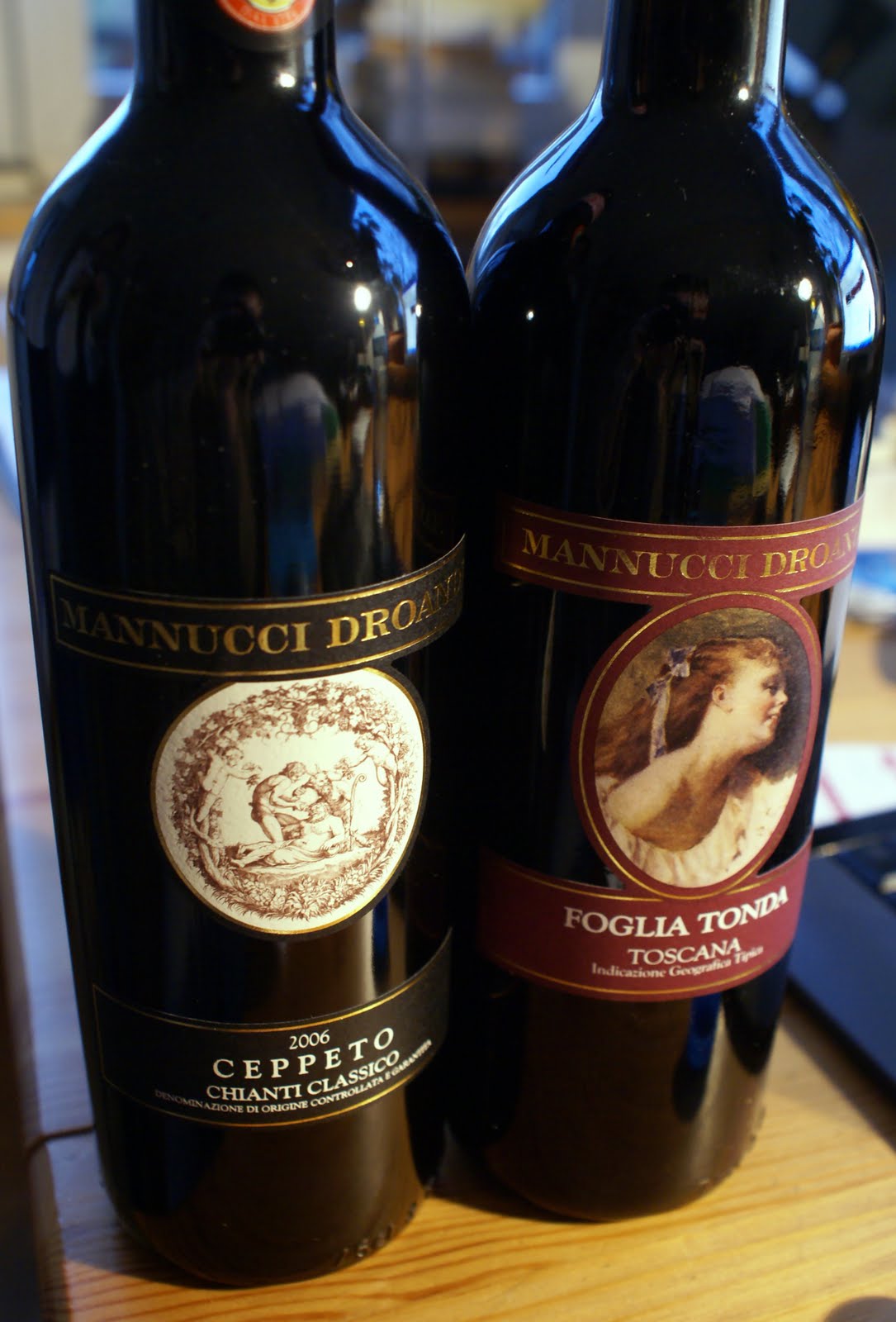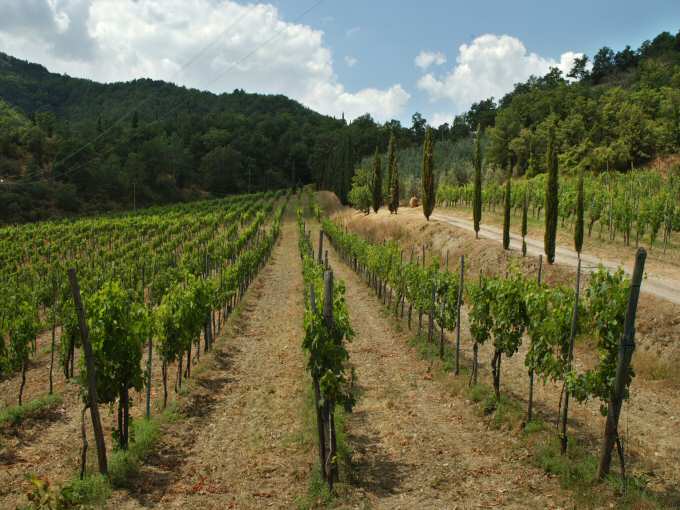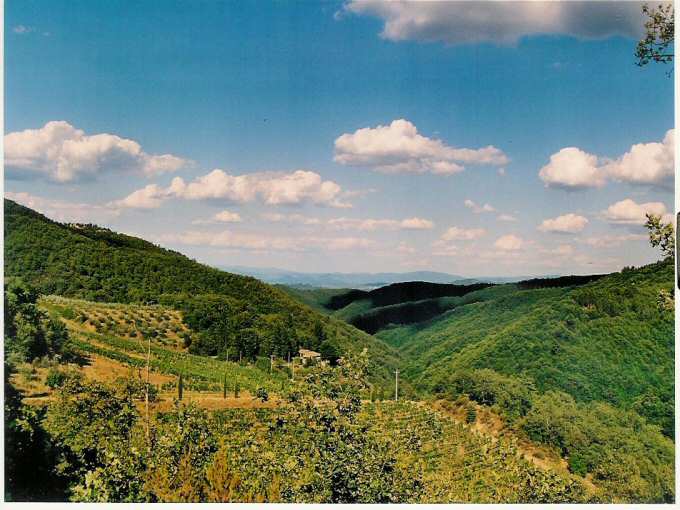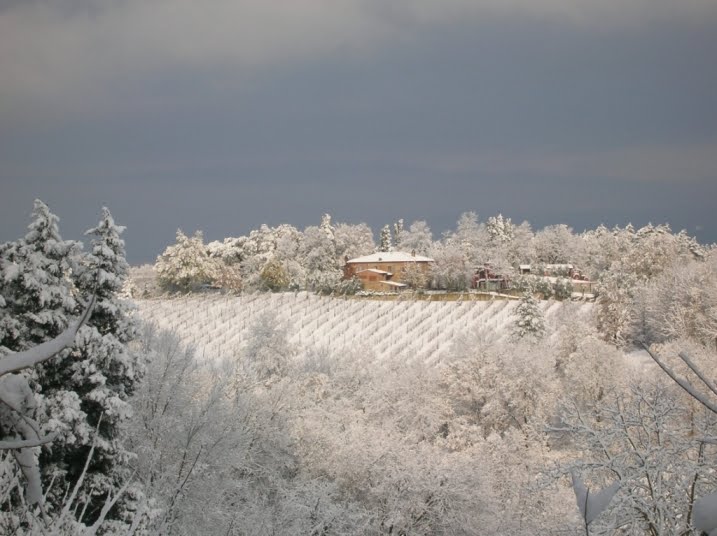The wines of Mannucci Droandi
Posted on 9 April 2010
Well, as we learn from the Chianti Classico 2000 programme, it’s not the whole story. Historically – i.e. in pre-phylloxera and pre-scientific replanting times in the early 1800s and 1700s – there were far, far more varieties grown in Chianti, and Sangiovese was anything but dominant in the vineyards. The plantings were universally mixed and a single harvest was operated where all varieties were picked and then pressed and vinified together. This traditional system persists in some areas of Germany and Austria where it is known as gemischter Satz whereas in France or Italy, the complantation has been largely abandoned. Italians have a term for a blend of grapes made in the vineyard and vinified together: uvaggio.
Now here are some of the excitingly obscure name of historical Chianti varieties that were examined with the CC2000 study:
Albano, Cascarella, Lugliola, Malvasia Bianca Lunga, Orpicchio, Perugino, Salamanna, San Colombano, Trebbiano Dorato, Vermentino Bianco, Zuccaccio (these are all white) and Aleatico, Canaiolo, Colorino del Valdarno, Foglia Tonda, Formicone Bonamico, Grossolano, Lacrima del Valdarno, Mammolo Nero (in several subvarieties including Primaticcio, Piccolo, Sgrigliolante) Mammola Tonda, Morellino, Passerina, Primofiore, Pugnitello, Rossone.
Before you smile asking ‘who on earth needs all these obscure useless grapes’, it is worth remembering that many grapes that were on the verge of extinction just a decade or two ago are now firmly established as some of the world’s most exciting. (Viognier is one example).
Mannucci Droandi, meanwhile, are offering varietal bottlings of other obscure historical grapes. The Barsaglina 2007 is a wine of some body and extract, quite tannic on end (I wonder how much of this derived from wood, of which there’s obviously been a little), rich but restrained and structured – which perhaps sums up the Chianti terroir somehow. The colour is moderately deep and the bouquet is modest: a little reductive and animal at first, with some bright red berries underneath. The fruit register and highish acidity are in fact Sangiovese-reminiscent, though the fierce tannins are not. Made in a rustic, challenging, not very elegant style, but surely with interest, though it’s hard to see exactly what this would contribute to a Chianti blend. The Foglia Tonda 2007 is altogether a better wine, with a cleaner and deeper aroma and a more balanced palate where the tannins are more integrated; there is some wood support but better digested than the Barsaglina above. An attractive wine with broad, assertive fruit and very good concentration, smoother and easier than a comparably sized Sangiovese (indicating Foglia Tonda as a softening and perhaps enriching grape in the blend).
Yet the most excitement comes with the regular, Sangiovese-based Mannucci Droandi bottlings. The Chianti Colli Aretini 2007 (coming from the historical core of the estate, the Campolucci vineyard located outside the Chianti Classico zone) is a typical Chianti with strong acids and mineral tannins, and plenty of seriousness too: most of Colli Aretini wines are for immediate drinking while this, aged in oak, can easily wait 4 or 5 years. Good impressions too for the Chianti Classico Ceppeto 2006 (Ceppeto is the name of a different, recently acquired property), riper and broader than the Colli Aretini, structured and tight and still somewhat dominated by the oak and extract, but with good fruit, length and potential. The Chianti Classico Ceppeto Riserva 2006 basically continues along the same lines, extractive and powerful with a tight mineral kernel wrapped in semi-intense crisp cherry. I’ve retasted these 2006s recently in Tuscany and they are evolving quite well (if slowly). Really distinctive and engaging stuff for a winery that only started bottling in 1998.





